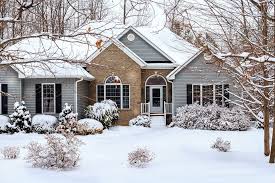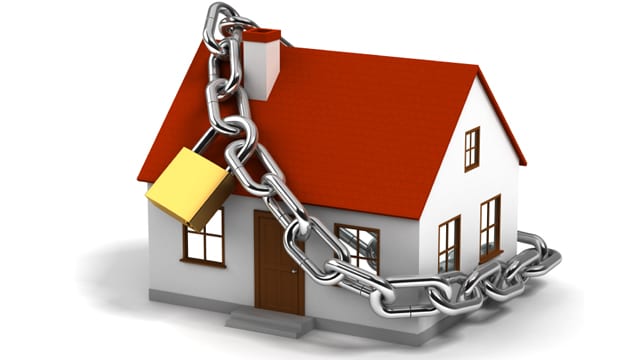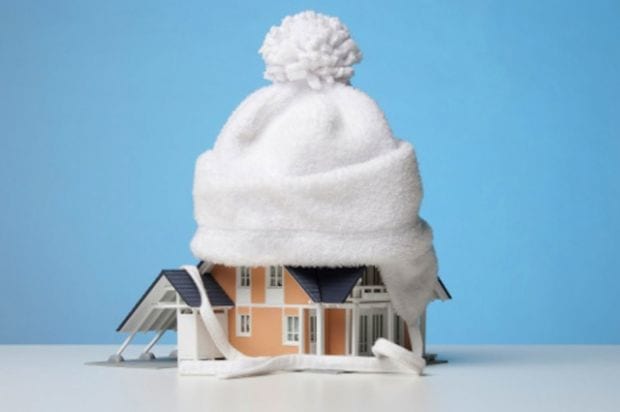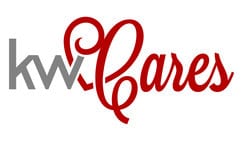Author: KP & Associates
Jun 24, 2016 / Buying
Will Releasing Real Estate Sales Data Replace Realtors?
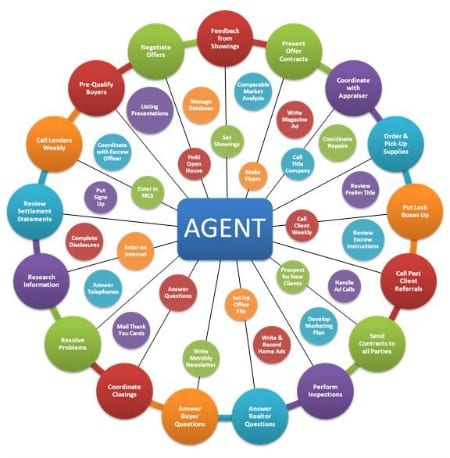
This month, the Federal competition tribunal ordered the Toronto Real Estate Board (TREB) to release ‘more home sales data to the public via the internet’
This action follows on the heels of the tribunal’s order in April 2016 which found that TREB was stifling competition by restricting access to data on its proprietary MLS. The new regulation stipulated that TREB must let its members offer searchable online databases called ‘virtual office websites’
The information now available includes information held on MLS, including data like sales prices, broker commissions and withdrawn listings, as well as archived data. TREB said that going forward, it would be protecting the rights of property owners by restricting access to individual home sale information including mortgage and security information.
The reaction to the changes in and around the real estate industry stated that this was the most revolutionary change in the real estate industry to date.
With over 35 years of experience as a top selling real estate agent, it seemed prudent to ask Karen for her thoughts on the changes and ask for her comments on the reaction on some of the social media platforms. ~ heather
? HR: You’ve been in real estate for over 35 years and have seen dozens of changes, will revealing this data to the consumer make a difference to the biz? Some pundits are referring to this as the ‘uberization’ of the real estate industry.
? KP: Honestly, it will make my life a little easier. Now my clients will be able to access that information on their own and won’t need my help.
This information that TREB has to release has been available for years in the US and it hasn’t affected the number of real estate agents doing business or the industry as a whole.
Change is good.
? HR: In a CBC interview about the new changes, the question was posed “ if all this critical information is now readily available, why do we need real estate agents?” Any comments?
? KP: Real Estate agents perform many tasks beyond releasing sales information.
? HR: Can you elaborate?
? KP: Sure. If I had to say what the top 5 services a real estate agent provides, I’d say the most critical was exposure. Real estate agents have access to multiple real estate listing sites, as well they are skilled marketers in their own rite, particularly on social media.
Besides that we’re always talking to someone who is either looking for a house or wants to sell a house, or knows someone in that position.
Unlike an individual home owner, who may have bought and sold maybe 3 or 4 homes in their lifetime, a typical real estate agent may engage in 20 transactions in a year. That’s a lot of experience.
And I’m seeing just how much experience makes a difference in this seller’s market. Particularly when we get into understanding how much a property is worth and how far we can push in getting more dollars for customers.
Real estate agents have to possess superior negotiating skills. Ever been in a bidding war? It’s more than just a battle of the nerves – but strong nerves helps. It’s also knowing your competition, when to bend and when to walk away.
There are numerous legalities in any real estate transaction. Contracts have to perfectly written-up with all the I’s and t’s dotted and crossed. In real estate transactions, verbal discussions don’t count and mistakes can be costly.
? HR: After the CBC interview, there were some nasty comments on Twitter stating that real estate agents don’t add value to the sale of a house.
? KP: I’ve heard that before. Most real estate agents charge between 3.5-5% in commission, but we always get more than 5% in terms of an asking price.
Just last night I was accepting offers, and we received two. The homeowner was disappointed in the offers, although they were asking price. And so on his behalf, I sent back the offers and asked the agents to ‘sharpen their pencils’ which they did. I’m not sure the homeowner would have done that if he didn’t have an agent as his advocate.
And just recently we had a local situation where two houses were sold on the same street. The first house was privately sold, and received $30K over asking price. But when our agent listed a similar house on the same street – around the same time, we listed it 100,000 higher and sold it $50K over asking.
When you do the math, it adds up to an upsell of $150K way more than 5%.
? HR: So – it’s exposure, experience, negotiating skills, legalities – that’s a lot of service.
? KP: Absolutely and that doesn’t cover getting the house listed at the right price. Real estate agents have the tools to valuate your house properly to market standards and we have the marketing expertise to bring the right clients to your home. And then there are the open houses, organizing home inspections, advising the client on home repairs… there’s a lot involved in each transaction.
And using a real estate agent is a form of protection for the home owner. We’re licensed, we’re accountable to the province and our brokerages.
If you purchase a home privately without an agent, you’re missing out on a whole lot of important information about that home that may or may not come out in the walk through or inspections.
Heather Robertson is a professional writer with Mynah Communications. She currently rents.
Our team of real estate sales professionals is committed to finding you, your dream home. Whether you’re looking to buy or sell, the Karen Paul team is here to help with any questions.
Karen Paul & Associates | Real Estate
905-333-6234 | karenpaul.com | info@karenpaul.com
Burlington • Oakville • Hamilton • Milton • Niagara
Interested in learning more? Send us a message here and we’ll be in touch with you soon after.
Jun 15, 2016 / Your Home
Knowing your home: A/C Maintenance between service calls

Successful real estate agents are a resource for their clients on many issues. And that means a lot of reading. Over the years, I’ve shared an article or two with clients and they are always pleased. This article from Climate Care Canada popped into my inbox. I thought it was great and even picked up a few tips.
If you didn’t know,
ClimateCare is Canada’s largest network of independent heating, ventilation and air conditioning (HVAC) systems contractors. They are 100% member owned, and have remained that way since 1992, when the now 30 member co-operative was formed.
With their permission, I am reprinting this article on caring for an air-conditioning unit between service calls.
Enjoy — Karen
How to Keep Your AC Healthy Between Service Visits
Seasonal air conditioner maintenance is the most important factor in extending the lifespan and maintaining the efficiency of your central air conditioning system. Ordinary wear and tear, especially dirt and grime buildup, can cause your AC to overwork, struggle, overheat and eventually break down.
Keeping everything clean will help you catch any smaller problems before they become serious. Something as innocuous as a layer of leaves on your outdoor unit can eventually cause your entire system to fail. So to keep everything in good shape, here are a few tips.
Change your filters every month.
This is the most important chore for your family’s health.
Old, dirty air filters aren’t able to adequately filter your air. The air you breathe in your home won’t be as clean as it ought to be, which can lead from everything to excess dust to respiratory problems. Dirty air filters can allow dirt and grime to build up in your ducts, which can lower the overall efficiency of your system and harbor microbes and mites that can multiply and get into the air in your home.
Once a month, replace or clean your air filters.
For 1? filters, look for one that you can’t see through when you hold it up to the light to make sure it’s actually doing the job in the first place
For larger washable filters, thoroughly rinse and dry them every 30 days. Swapping between 2 filters every month is easiest.
Keep your drain line clear.
As your air conditioner keeps the house cool, condensation builds up in the system and drains through a series of tubes. If left stagnant, these pipes grow ground for mould and fungus, which can spread and clog your whole drainage system.
Once a year, as part of regular air conditioner maintenance, an HVAC specialist will use a high powered vacuum to suck everything out of the pipes. To prevent the problem in the first place, you want to visually inspect the drain at least once a month. If there’s a buildup of liquid in your drain pan or in the pipe, do your best to remove any debris that may be clogging the outlet.
To keep gunk from growing in the first place, every three months you should add 1/4 cup bleach mixed with 3/4 cup water directly to your drain line’s access port (usually a T-valve). If the plug on your access port has a wire coming out of it, make sure to switch off your air conditioner’s breaker before you remove the cap, and be sure to replace it when you’re done.
Keep your condenser clean.
During the off season, your condenser can get clogged with leaves, dirt and other gunk. This hinders circulation and can actually keep your air conditioning unit from cooling at all.
On the first of every month, visually inspect your air conditioner’s outdoor unit. Trim back any grass, weeds, hedges, or other plants, and remove or gently brush away any leaves or dirt stuck inside. Switch off your air conditioner and rinse the outside surface. A garden hose with a spray nozzle works just fine, as long as you spray from top to bottom.
Replace the thermostat batteries.
Your HVAC professional will calibrate your thermostat as part of the annual air conditioner maintenance, but if it goes out between routine checkups, the batteries are pretty easy to replace yourself.
Some thermostats have flip open battery covers, but usually you’ll have to gently pull the thermostat or its faceplate away from the wall. Just swap them out and pop the thermostat back in place – but make sure you shut off your thermostat’s breaker before you start to make sure you don’t get shocked.
There you have it! You can have a hand in maintaining your home comfort equipment without being an expert.
If you have other HVAC questions, visit the ClimateCare website ==> ClimateCare.com, it’s chalk full of information or you can reach out to them on Facebook.
Our team of real estate sales professionals is committed to finding you, your dream home. Whether you’re looking to buy or sell, the Karen Paul team is here to help with any questions.
Interested in learning more? Send us a message here and we’ll be in touch with you soon after.
Jun 8, 2016 / Buying
8 Tips On How to Compete With Multiple Offers

HGTV recently shared a wonderful post on their blog: ‘Competing with Multiple Offers: Five Key Tips’ by Sarah Daniels.
It was such a great post, I decided to reference it in my June 2nd e-newsletter and curate the post here for our blog.
The HGTV post starts out…
In a sellers’ market, which is what we are currently experiencing, buyers can find themselves in competition with other buyers to purchase a home.
Good news for the seller, not so good news for the buyer.
Sometimes, a property is in such high demand because of its size, features or location that it warrants multiple offers.
And getting the highest price for your home brings out different tactics.
There are times for example, where
“homeowners strategize with their real estate agent to under-price a property in order to generate a lot of interest and ultimately create a bidding war. The seller often chooses to consider offers on a certain date, in a time frame that works for them. This allows the property owner, in conjunction with their agent, to hold open houses on the weekend so that many prospective buyers can see the home at once, and then they deal with the offers several days later. “
Some buyers decide to present an offer via their agent before the indicated date. The hope is that the seller will consider your offer without seeing any other offers that may come forward on that date.
This is known as a bully offer and is usually pretty enticing for the seller offering a great price and fewer conditions. But bully offers are risky and you may end up paying an unnecessary premium for the property or worse choosing a property that needs repairs that might have appeared in a home inspection.
Even then, you and your real estate agent may find yourselves in a bidding war.
Logic can go out the window in a bidding war!
And when it comes to bidding wars, and I’ve been through a few, it seems that logic goes completely out the window.
In the HGTV article, Sarah Daniels outlined 5 excellent tips for every buyer to feel in-control of the situation and ride out a multiple offer situation.
I added a couple of points myself.
- Make sure your home financing is secure.
- Make sure the property title is in order. If you know in advance there aren’t any easements or rights-of-way that exist, it’s one less “subject” you have to include on your offer. Fewer subjects make more appealing offers to sellers.
- If you can, do an advance home inspection .The buyer could consider your offer more readily, if it doesn’t include a “subject to inspection” clause.
- Work with your agent and to assess the competition. Are you competing against one family or a dozen? This will help you gain perspective on the situation.
- Establish the price you are willing to pay and just how much you want the home, so you make an offer you feel confident about. Then if you lose the home by a mere $1000 you won’t agonize over it afterwards.
And I would like to add:
- Make sure you get everything in writing. Oral agreements have no effect on your offer to purchase which is a written, binding contract when the seller signs and you meet all of the terms and conditions.
- Hire an experienced real estate agent who is also a member of a team. That way you are not only drawing on years of experience, and getting the best possible advice but you can be sure there is always a back-up.
- Do your own homework and ask good questions of your realtor. Make sure you know and understand their marketing plan and how they interact in a seller’s market.
Buying and selling your home should be an enjoyable experience. It’s one of the biggest decisions in your lifetime and most people only make it once or twice.
So, take the time to make sure you’ve got your ducks-in-a-row and experience on your side.
Our team of real estate sales professionals is committed to finding you, your dream home. Whether you’re looking to buy or sell, the Karen Paul team is here to help with any questions.
Interested in learning more? Send us a message here and we’ll be in touch with you soon after.
May 31, 2016 / Selling
5 Tips to Get You in The Sell-My-Home Mindset
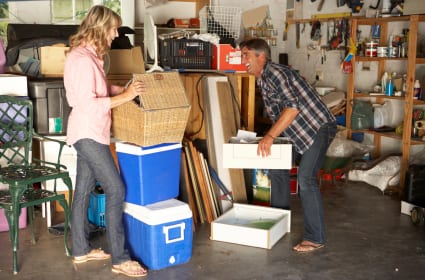
The first step in selling your house is obtaining an independent, unbiased home valuation. Provided by a licensed real estate agent, it’s provides you with an idea of what your home is worth given current market conditions. This is also your opportunity to find the right realtor to sell your home on your behalf.
The second step is to get yourself in the sell your home mindset, particularly if you’ve bene living in your home for a long time. And there are several things you can do in your house before you ask for the valution.
You’ll not only learn more about the current condition of your home but will be able to answer your realtor’s questions.
Locate The Important Papers
The operating manuals for your appliances and HVAC system, notes about the paint colors you used on your walls and any applicable warranties are relevant for any a new buyer. At the same time, having utility and annual maintenance bills will demonstrate to your agent and the buyer that you mean business and provide a level of transparency.
Get serviced. Get Estimates
Take the time to get things serviced from appliances, to alarm and HVAC systems. You’ll have a better understanding on potential life expectancy and get a cost and time estimate on a replacement if necessary. You may not be prepared to overhaul worn-out items now, but knowing how much it will cost could give your real estate agent an edge in negotiations. A bidder may ask for $10,000 off the asking price for a necessary repair. But your research may show that update would only cost half.
Repair & Replace
No time like the present to tackle the repair to-do list. And small updates such as replacing old kitchen hardware or bathroom and kitchen fixtures can make a real difference. Replacing a 10-year old garage door is a relatively inexpensive update that is safer and easier to use.
Don’t plan any major updates before the home valuation when you will get a second opinion you’re your real estate agent. Not all renovations are equal and will make a difference in the asking price.
Update Your Curb Appeal
The entrance way to a home says a lot about the people who live there and can make a difference to a buyer. If you’ve been planning on painting the door and the trim, repairing the fence, or fixing the cracks in the driveway this is the time. Power-washing the exterior siding and windows is a minimum investment and will give your home a huge lift.
DeClutter | Deep Clean
Eventually this will have to done before you sell your home so it doesn’t hurt to get a jump on it early. Establishing some guidelines on what is kept and what gets chucked will limit the number of decisions you have to make.
A few other tips:
- Inquire with local charities as to their donations regulations. Some will pick up your junk. There are also consignment stores that can sell some of the big items on your behalf. And rent a bin – saves endless trips to the junkyard.
- Get the family involved, have them purge their own stuff. And if becomes absolutely overwhelming, hire a professional organizer to get you through the worst of it.
- When we say deep clean – we’re talking DEEP. It’s time to look at the items that get ignored like the blinds, underneath the stove, vacuum your fridge’s condenser coils and more. Save your energy for the important de-cluttering tasks by hiring a professional cleaning company.
Before you start and take some photos. If you do sell you’ll think back to the old house, with its clutter and wish you’d kept a few pictures to remind you of what those wonderful early years were all about.
It’s happened before, after meeting with your agent and having a home valuation completed, you may decide that your old house is where you really want to be. And that’s just fine.
You’ll be able to enjoy the improvements you’ve made, have a better understanding of how much your home is worth and have established a relationship with a realtor that you can use when you are ready to sell your home.
Our team of real estate sales professionals is committed to finding you, your dream home. Whether you’re looking to buy or sell, the Karen Paul team is here to help with any questions.
Interested in learning more? Send us a message here and we’ll be in touch with you soon after.
May 18, 2016 / Community
Ready, Set, Wear It! Boating Safety Comes to Burlington

As a waterfront community Burlington is fortunate to be close to some of the finest marina facilities on Lake Ontario.
Anchored in the east in Oakville is Bronte Harbour Marina (pictured below), a full-service marina located in the Heritage Waterfront Park in the Village of Bronte. The facility boasts a boat yard, fuel dock, stable floating docks with both electrical and water hook-ups dockside.
On the western edge of the city is Harbour-West Marina in Hamilton, a 7-day a week operation offering everything required for a pleasurable boating experience.
There are also several yacht clubs in the area where you can learn to sail or participate in regular sailing race days without having to own a boat. (Check out LaSalle Park Marina Association which also hosts the Burlington Sailing and Boating Club.)
Every boater will tell you that life begins with a boat, and also tell you that boating is far more enjoyable when safety is front and center. That means that the captain and the crew are always wearing PFDs (personal flotation device) or lifejackets when out on the water.
Since it’s such an important message, Canada’s leading boat safety organization, the Canadian Safe Boating Council along with its counterparts world-wide kick off Safe Boating Awareness Week at the beginning of the first long weekend of the summer, this year May 21-27.
Since 1995, the campaign has been the mainstay of boating safety outreach to the over 16 million people who recreate on Canadian waters each season.
The core of all of the safe boating campaigns are 5 key messages that have been consistently delivered to the boating community.
- Wear a PFD or Lifejacket – Legally all boats must carry PFDs on board, appropriately sized for each passenger. But don’t just carry it, WEAR IT.
- Don’t Drink & Boat – Boating under the influence is not just illegal; it’s irresponsible. Wait until you get back to the pier to have that beer.
- Take a Boating Course – The law now requires that anyone driving a motorized boat must have a pleasure-craft operator card. It’s for your own safety and that of your passengers. Don’t get caught without one. Take a course and get your license!
- Be Prepared: Both You and Your Vessel – Ensure your boat has all the required safety gear and sufficient fuel. Be sure the weather is suitable for your vessel’s capabilities.
- Be Wary of the Dangers of Cold Water Immersion – Cold water is a significant risk. Learn how to protect yourself.
The Canadian Safe Boating Council provides numerous videos on safe boating from required equipment on your boat, weather, calling for assistance, how to be a responsible boat operator and more.
Central to the boating safety message is the Ready Set Wear It! campaign to have as many boaters wearing PFDs photographed in one place. Numerous events are held world-wide and each year the event gets bigger. Last year’s campaign set a new world record for world-wide participation:
- Participants – 10,917
- Inflatable Life Jackets – 1,927
- Inherently Buoyant Life Jackets – 8,990
- Dogs in Life Jackets – 65
- Total Number of Events – 257 – 15 in Canada
Anyone can host a Ready Set Wear It! campaign. Boaters sign up for an event, arrive in their PFDs/lifejackets and during the photo taking, inflate their PFDs where appropriate. There’s a dedicated Facebook page to load photos.
Something new this year, the CSBC is asking boaters to wear their PFD to work as a conversation piece for safe boating.
It’s great living in a community where it’s easy to access water and participate in one of the greatest family recreation past times. But at the same time, we need to be responsible.
Be a SMART Boater and as the Canadian Safe Boating Council says… Don’t Just Carry It, Wear it!
And if you do wear your PFD to work, be sure to send us a photo 🙂
Our team of real estate sales professionals is committed to finding you, your dream home. Whether you’re looking to buy or sell, the Karen Paul team is here to help with any questions.
Interested in learning more? Send us a message here and we’ll be in touch with you soon after.
May 12, 2016 / Your Home
A Great Looking Front Door Says It All!

Believe it or not, your front door says a lot about you and your home. Beyond having great curb appeal, a front door will protect you from the elements, intruders and help make a great first impression on friends, family and your neighbours.
According to ancient Greek architecture and Chinese philosophy, the colour of the entrance way reflects the character of the people inside. We thought we’d share some of the character/colour matchings just for fun.
- A classic red door for example says that you are welcoming and denotes good energy. In colonial times, a house with a red door was home to a friendly family who would not mind putting up a tired traveler.
- Black doors symbolize authority and strength, while white front doors symbolize neutrality and purity.
- A grey door symbolizes dignity and knowledge, while a multi-colored door, according to Dionysian theory, suggests that this is home of creative happiness.
Regardless of the colour, a good paint job shows that you care about your home, and that says a lot to a potential buyer.
Looking for a new front door?
Mike Holmes, in a recent National Post article stated that ‘when it comes to performance there are some basic things your front door must do’.
First and foremost, your front door should be strong enough and have a solid frame to prevent intruders, including those that kick-in a door.
Your door should also open and close properly to prevent water from entering your home and air escaping. If the weather stripping at the bottom of your front door has seen better days, it might be time replace or upgrade the front door of your house.
In terms of materials, Holmes suggests that the top three materials best suited for doors are:
- wood,
- fiberglass
- steel.
Holmes himself, says he favours wood doors because they are not only top-of-the-line but look great. The down-side is that they are often the most expensive and require regular maintenance. A storm door or an overhang can give a wood door a little added protection.
If your budget is a little tighter, Holmes recommends either a wood-looking fiberglass door which are less expensive but not as solid, or a “steel insulated door with a wood frame. They’re strong, durable and don’t require a lot of maintenance.”
Some residents favour glass in the door for extra light or for the pets. If you’re leaning towards glass, Holmes recommends safety glass that is also tempered. While glass looks great, it’s not as strong as wood or steel and doesn’t insulate as well.
Locking Mechanism:
A door is really only as good as the locking system. A multi-lock secures the door at three points which not only makes your door more resistant to home invasions but up to 45% more airtight – which is a real bonus. (See Justin Loncaric’s blog post on other ways to reduce home invasions.)
Lighting:
Is your front entrance as well as house number easy to spot at night? Will guests be able to navigate to and from safely? Adequate lighting, even lights programmed on a timer will tell people that you are concerned about safety.
Mailbox:
Is your mailbox large enough for your everyday mail, or is it a challenge for the postal carrier to fit your papers and magazines inside it? And if you have other deliveries on a regular basis, are there places for them to stow ‘stuff away’ when you’re not home.
A front door probably won’t make or break the sale of your home, but it can easily add to your home’s value and increase the curb appeal to potential buyers – say nothing of what the colour of your front door is telling your neighbours!
Our team of real estate sales professionals is committed to finding you, your dream home. Whether you’re looking to buy or sell, the Karen Paul team is here to help with any questions.
Interested in learning more? Send us a message here and we’ll be in touch with you soon after.
May 3, 2016 / Community
Plant A Tree With Mom This Mother’s Day

Trees are strong, majestic and beautiful. Much like Moms.
Maybe this is the year your family can celebrate Mother’s Day by purchasing and planting a tree in the yard. It’s a great family activity, a great way to recognize Mom, and play an important role in keeping Burlington safe and healthy.
Trees play an important role
in the urban environment.
If you’re curious about the role the urban canopy plays in keep our cities and our lives happy and healthy – consider the following:
- Their role in stopping global warming: Trees intake carbon dioxide and release oxygen, giving them a critical role in the reducing the amount of CO2 in the air. According to Arbor Environmental Alliance, a single tree can absorb CO2 at a rate of 48 lbs per year making planting a tree one of the cheapest and most effective ways to draw excess amounts of CO2 from the air.
- How they cool our yards: Trees provide shade and transpire water which can subsequently cool a yard by 9 degrees. Trees also reduce ‘heat sinks’ (environments that absorb excess heat) which are generally speaking 6-19 degrees warmer than their surrounding areas.
- Lower our utility bills: Trees can be used to block direct sunlight from homes that then can lower air-conditioning bills. One large tree strategically placed in a yard can replace 10 room-size air conditioners operating 20 hours per day.
- Help sell homes: Most realtors will advise that the presence of trees makes it easier to sell a home. Some experts have estimated that a well maintained tree can add as much as 20 percent to the value of a home.
Trees Need Care.
And that care and maintenance is different from just standard gardening practises.
Basic tree maintenance includes:
- Pruning: Some people consider pruning a negative action, but regular pruning helps trees develop a strong structure. Dead, defective, and diseased limbs, poorly attached or even low branches that interfere with vehicle or pedestrian traffic should be removed. Additional pruning may be necessary to thin out the canopy to allow the wind to blow through.
- Mulch at the base of the tree helps insulate it during hot and cold temperatures. Mulch also helps keep the roots moist and block the growth of weeds. In the end, just leave the mulch to do its job and not pepper it with grass clippings or planted flowers.
- Water: Newly planted trees require regular watering as they use lots of energy expanding and strengthening their root structures. The soil around the tree should be moist but not soaking. Overwatering can cause root rot, or drown the tree.
- Insect/disease control: Keep an eye on the tree roots for a change in colour which could mean a nutrient deficiency. Lawn mowers or string trimmers can injure a tree making it more susceptible to bacteria and fungi, eventually weakening it. Even excessive bark damage can result in the death of a tree.
A professional arborist who often work with professional tree maintenance companies can assist in diagnosing tree problems, as well as guide you through choosing the right tree and location for your home.
The City of Burlington & Trees.
“The city of Burlington plants approximately 1,000 trees annually as replacements, through capital projects, development and in response to resident requests for street trees. Trees are typically planted in boulevard settings, but are also planted in parks.
The sustainability and health of the future urban forest will rely on the selection and planting of a diversity of tree species, planted in appropriate locations and maintained until they are well established. The city is committed to establishing a more diverse future urban forest, and working with developers and contractors to ensure a diverse range of native and non-native non-invasive tree species get into the ground.”
In an effort to keep the trees healthy, Burlington’s Roads and Parks Maintenance Department enlists residents to assist in maintaining the trees on the street boulevards. In addition to the regular maintenance tips above, the city asks that you NOT:
- Remove support stakes within the first 2 years of planting
- Prune or trim trees. Pruning of city trees is provided by city staff or contractors trained in arboriculture practices at least every seven years taking into consideration tree characteristics, severe storms, insect infestation, wild animals etc.
- If you do have a problem with a tree call the Roads and Parks Maintenance Department to arrange for an inspection should anyone feel that a tree needs help. .
Protecting our urban canopy is important for our urban environment.
Contact the following Burlington businesses (tree surgeons, specialists or arborists) to learn more about planting a tree in your yard: Arborcorp | Arborwood | Timberwolf Tree Care & Consulting. Resources for this article: Enlightenme.com
Surprise Mom with something different for Mother’s Day this year and protect Burlington’s urban environment – say nothing of keeping the city cooler!
Our team of real estate sales professionals is committed to finding you, your dream home. Whether you’re looking to buy or sell, the Karen Paul team is here to help with any questions.
Interested in learning more? Send us a message here and we’ll be in touch with you soon after.
Apr 21, 2016 / Real Estate Know-How
How To Reduce The Chance Of A Home Invasion By 90%

No one wants to deal with a home invasion. But how do you reduce the chances of one happening?
Fortunately, home invasions are a well-studied phenomenon — especially by law enforcement.
Numerous studies have identified specific things you can do to cut your risk dramatically.
Here are some ideas:
- 34% of home invasions occur through the front door. Experts recommend investing in a door with a top-quality locking mechanism. (The best are those that lock at three points of contact.)
- 50% of burglars will be deterred if your home has some sort of video monitoring system. No thief wants to see their face on YouTube!
- Unfortunately, signs and window stickers warning of an alarm system do not deter thieves. However, 62% of burglars will immediately run away when an alarm goes off. Always turn on your alarm system when you’re not home!
- 22% of burglaries occur through a sliding glass door or patio door. Make sure it’s locked and also use a solid metal jammer.
- Some thieves use frequency scanners to gain access to garages. Police recommend changing your remote entry code regularly and putting blinds or curtains on garage windows so thieves can’t see (and be tempted by) any valuables inside.
As you can see, there are many simple things you can do to reduce your chances of a home invasion dramatically.
The effort is worth it.
JUSTIN LONCARIC | Real Estate Sales Professional
Cell: 905-407-9837 | Office: 905-333-6234
[mail_to email=”info@justinloncaric.com”]info@justinloncaric.com[/mail_to] | karenpaul.com



Interested in learning more? Send us a message here and we’ll be in touch with you soon after.
Apr 14, 2016 / Buying
Under The Microscope: A Real Estate Agent’s Day

So, how does a real estate agent spend their day? Good question.
On average, every real estate agent spends about 9 hours of ‘behind the scenes’ work for every hour they spend with a potential buyer or seller. So, what do they do?
Searching:
Just like everyone else, real estate agents spend a lot of time online, checking out – that’s right, real estate listings.
That’s market research and it’s invaluable when servicing our customers, whether they are buying or listing a property for sale.
But most agents are also looking for homes for buyers. And some buyers have very specific requirements beyond the standard number of bedrooms, particular neighbourhoods or amenities.
Sometimes matching a buyer with a home can take some work including scoping out a neighbourhood so there aren’t any disasters like in this Realtor video.
And listings can appear and disappear almost overnight, so most real estate agents make checking the Multiple Listing Service a daily routine.
Networking & Prospecting:
We’re always on the look-out for new prospects. Not only are we previewing other properties but we are taking that time to network with other agents talk up a listing or put feelers out for a house that a client may be looking for. Personal interaction is still one of the best ways to get the word out.
Marketing:
Real estate agents invest a lot of time and dollars into marketing a property. And the list of opportunities is endless from magazine and newspaper ads, fliers, online advertising to open houses.
Handling the Offers:
We spend a lot of time at the negotiating table. And that involves writing offers and counteroffers, which is a critical step in a real estate transaction that can either earn or save you several thousands of dollars.
Getting the best price requires an agent explaining to a client how to counteroffer and the best ways to get the desired results. Just tracking how the negotiations are going takes time.
Being On Hand:
As your advocate, your real estate agent may be the person present during a home inspection. Then there is the organizing of numerous small tasks that need completing: staging the home, the photographer, showings… well the list is endless.
Keeping Calm:
Not every sale goes smoothly and real estate agents spend a lot of time fixing issues and putting out fires – often without the knowledge of their client.
And when the pressure is on and seller is juggling multiple offers or the buyer is waiting on a signature, it’s your real estate agent that keeps the situation calm.
Selling or buying a house is a very emotional experience and it’s important to have someone in your court that stays positive and works towards a great solution.
And that just about sums up a typical day for just about every real estate agent!
Our team of real estate sales professionals is committed to finding you, your dream home. Whether you’re looking to buy or sell, the Karen Paul team is here to help with any questions.
Karen Paul & Associates | Real Estate
905-333-6234 | karenpaul.com | info@karenpaul.com
Burlington • Oakville • Hamilton • Milton • Niagara
Interested in learning more? Send us a message here and we’ll be in touch with you soon after.
Apr 7, 2016 / Buying
The Anatomy of a Real Estate Listing

So you’ve decided to sell your home, and you’ve settled on a real estate agent to represent you. The next step is to draw up a real estate listing agreement with your agent.
The listing agreement has to two purposes. First it gives your real estate agent the authority to act on your behalf and find a buyer for your property. Secondly it outlines the details of the property and covers the terms and the conditions of the sale.
A legally binding contract, it’s worth taking a moment to read it carefully to make sure you fully understand what you’re signing.
TYPES OF REAL ESTATE LISTING AGREEMENTS:
There are two types of real estate agreements: exclusive and multiple listing.
An Exclusive Listing Agreement gives the real estate agent the exclusive right to find a purchaser for your property. This is usually for a fixed time period (30-90 days) which can be renewed.
A Multiple Listing Agreement allows the real estate agent to list the property on a multiple listing system (MLS). A computerized real estate listing system, it’s available to all participating real estate board members. It’s like having a team of real estate sales professionals working on your behalf. The time period is usually 60 days although that is negotiable.
COMPONENTS OF THE LISTING AGREEMENT:
Most real estate listing agreements are standard, pre-printed forms with all of the expected wording and clauses. There are blank sections however, that need to be filled out by the vendor and the real estate agent.
The Property Tangibles:
Every listing agreement has to set out the pertinent details of the property including:
- list price,
- legal address,
- a description of the type of property including such things as property dimensions, number and size of rooms, type of heating system, main recreational features, amenities etc.
- Any chattels or extra features (appliances, draperies, carpeting etc) that are included in the list price are also listed.
The Intangibles:
Other items generally included in the listing agreement include:
- mortgage details including balance, monthly payments and due date,
- the annual property taxes,
- any liens, rights of way, easements or other charges on the property.
This is the time to discuss ‘disclosure’ with your real estate agent. The vendor is obligated to report any relevant facts or material details that could either affect the sale of the property or influence a buyer’s decision to purchase.
Most post-sale disputes can be avoided if accurate and appropriate disclosures are made.
Defining the Real Estate Agent relationship:
The last part of the real estate listing agreement establishes the rights and obligations of both the vendor and the agent.
What you will see covered here are:
- the fee or commission rate,
- how the commission is earned and when it will be paid,
- the marketing opportunities your realtor plans to use,
- any additional services that your real estate agent agrees to provide.
Once you have come to an agreement on all the terms, the agreement is signed and witnessed, and you receive a copy.
Most listing agreements have a set terms (30, 90 days and 6 months) which is negotiable. Sometimes, the real estate agent inserts a cancellation clause, which pre-empts a need for an expiry date.
As with everything else in the listing agreement, it’s wise to heed the advice of your real estate agent while considering your comfort level.
Your real estate agent is your advocate and has your best interests at heart. Believe it or not, they want to sell your house for the best price, just as much as you do!
Our team of real estate sales professionals is committed to finding you, your dream home. Whether you’re looking to buy or sell, the Karen Paul team is here to help with any questions.
Interested in learning more? Send us a message here and we’ll be in touch with you soon after.

